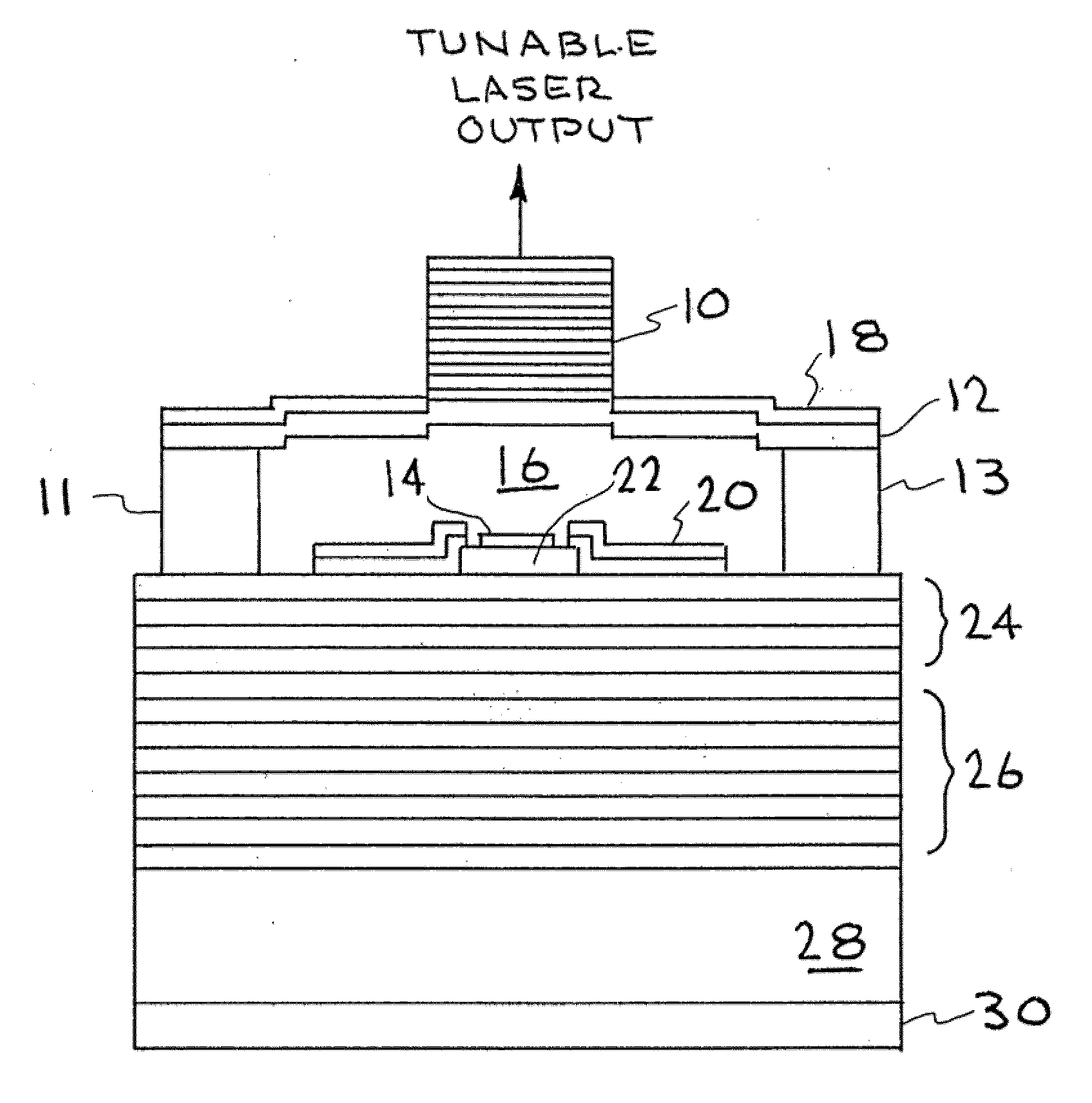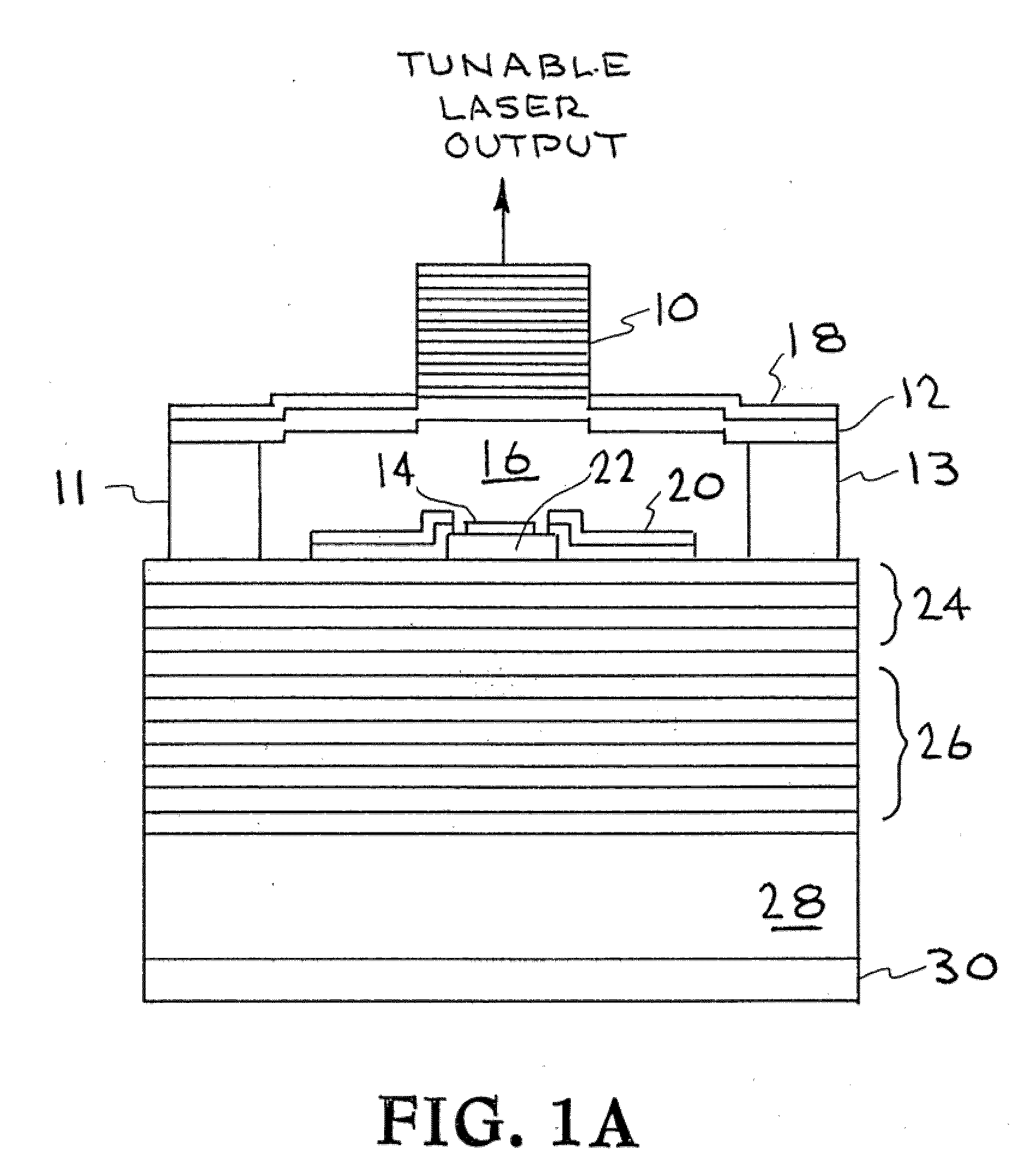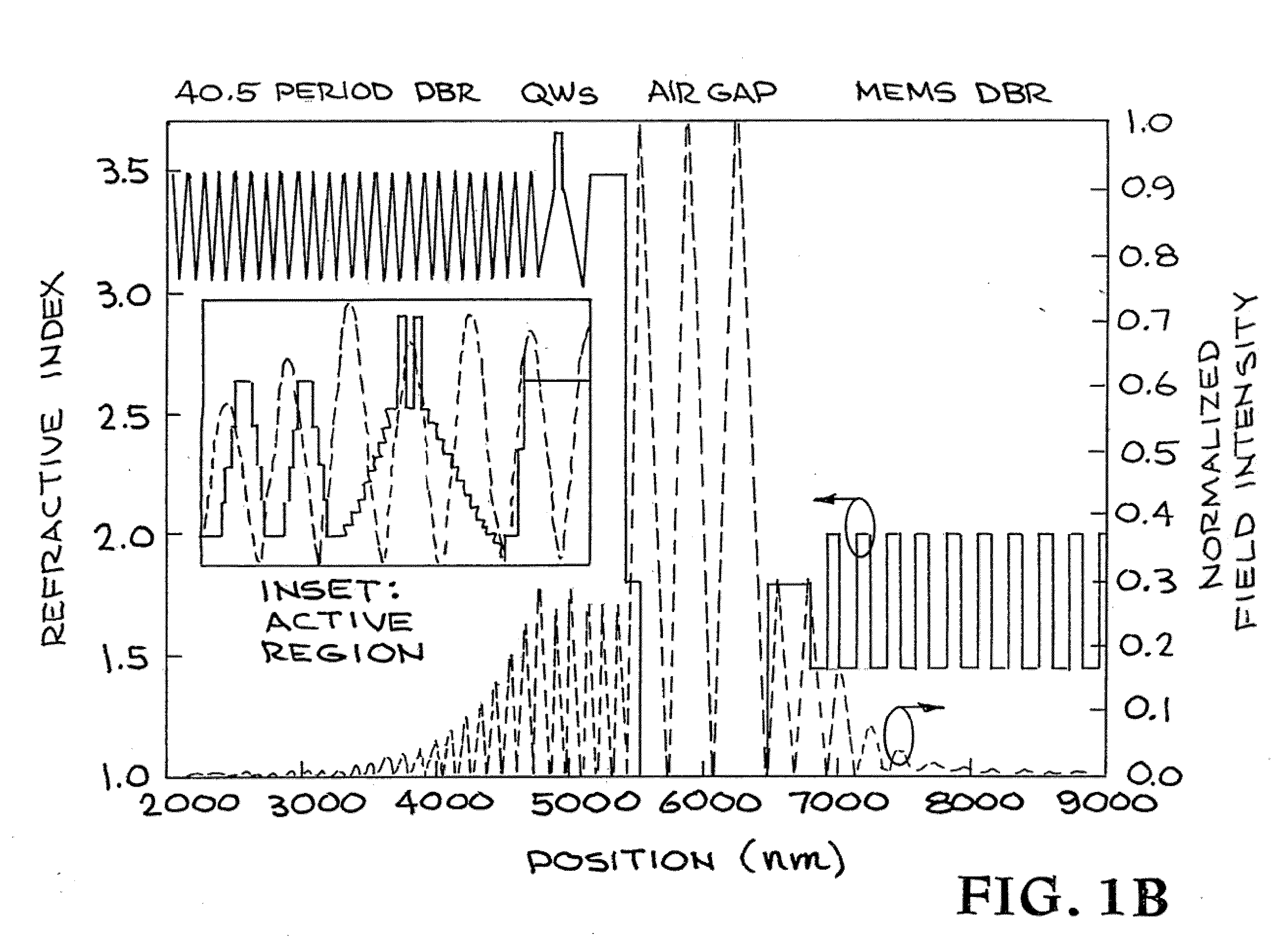Tunable photonic cavities for in-situ spectroscopic trace gas detection
a photonic cavity and in-situ spectroscopic technology, applied in the field of gas detection methods, can solve the problems of limiting the deployment of current devices and materials, unable to meet current device and material constraints, and needing cryogenic cooling
- Summary
- Abstract
- Description
- Claims
- Application Information
AI Technical Summary
Benefits of technology
Problems solved by technology
Method used
Image
Examples
Embodiment Construction
[0019]Embodiments of the present invention use an extended cavity (EC) MEMS-tunable VCSEL in which the epitaxial materials structure is engineered to align the laser emission to a specific absorption wavelength (coarse tuning). Additionally, these devices incorporate a micromechanically tunable optical cavity that allows for scanning of the emission wavelength over a wide and continuous range, allowing access to multiple absorption lines of the gas (fine tuning). In addition, when gases without a significant NIR signature are to be detected, complimentary techniques can be implemented on the same platform. Functionalizing the cavities with gas-sensitive coatings allows for enhanced detection through a change in the optical response of the coating (e.g., index shift, change in absorption). Resonant cavities with high quality factor (Q), amplify the magnitude of these changes. Cavity ring down spectroscopy (CRDS) can be implemented to increase the sensitivity.
[0020]Devices have recent...
PUM
 Login to View More
Login to View More Abstract
Description
Claims
Application Information
 Login to View More
Login to View More - R&D
- Intellectual Property
- Life Sciences
- Materials
- Tech Scout
- Unparalleled Data Quality
- Higher Quality Content
- 60% Fewer Hallucinations
Browse by: Latest US Patents, China's latest patents, Technical Efficacy Thesaurus, Application Domain, Technology Topic, Popular Technical Reports.
© 2025 PatSnap. All rights reserved.Legal|Privacy policy|Modern Slavery Act Transparency Statement|Sitemap|About US| Contact US: help@patsnap.com



